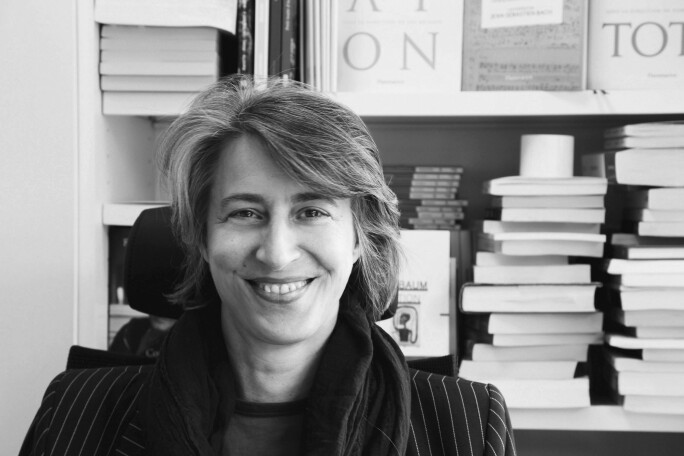To mark YVES SAINT LAURENT AUX MUSEES – six top museums uniting and paying homage to the French fashion genius – Sotheby's spoke to Maxime Catroux, Yves Saint Laurent’s goddaughter. The prize-winning literary editor – presently, Flammarion’s Directrice Editoriale Deleguée – is the eldest daughter of Betty and François Catroux. Appointed vice-president of Fondation Pierre Bergé-Yves Saint Laurent, Maxime Catroux wrote the foreword for Gallimard’s Madame Bovary: Dessins de Jeunesse d’Yves Saint Laurent.

Can you describe your earliest memory of Yves Saint Laurent?
My first memory of Yves was being moved to tears, when I was a child. At home, I answered the phone. He said, ‘Bonjour comment vas-tu ma chérie? It sounds so silly but it was the tenderness, loneliness and sweetness.
Saint Laurent could affect women in an extraordinary way, he was so sensitive!
Yves was an exception in Paris. Many would have been crushed, without his talent. French high society can be very cruel, if you read Proust, [you can understand how] it can be a mean, sharp and cruel world. Yves was the only one allowed in that world, to remain innocent, with the shield of Pierre Bergé.
Did you ever discuss Proust with him?
Not as such, but I understand how Yves must have found his dream world. His love for Proust was a quest for meaning in everyday detail of dresses, shoes, colours, objects and décor. Nothing is random. His quest for absolute beauty led him to that.

Did he ask about your life?
Not really but Yves knew that I had found my passion like he had found his. Later on, I rediscovered his love of literature when writing the foreword for his Madame Bovary drawings. They were done when he was fifteen and still at school in Oran. The small, handmade book was a shock. The talent just flew out of him: the drawings, the illustrations, his understanding and his handwritten start of each chapter.
Saint Laurent introduced you to Marrakech?
It was an unforgettable vacation, when I was 17 or 18. Yves wanted to share the beauty of the life that he and Pierre Bergé led in Marrakech. I discovered the Villa Majorelle, the Matisse-like colours, the gardens and the souks. It reminded me of that Hitchcock movie (The Man Who Knew Too Much) which took place in Marrakech. That sense of warmth, happiness and large crowds, where everyone is shouting but it’s not threatening.
Saint Laurent was renowned for his generosity. Do any gifts come to mind?
Yves’s 18th birthday present was a cahier dessiné that was especially composed for me. Halfway between a sketchbook and a handwritten letter, it combines all the things that he loved. Kept very close, it’s one of the most wonderful treasures I will ever possess.
Which possessions stand out for you, from his rue du Babylone home?
The Goya. The place was filled with extraordinary, head-turning pieces but it was that portrait of that young boy. Kept on an easel, it was never hung on the wall. Yves spoke about Matisse, Picasso, Van Gogh and other artists. But I think that Goya painting was very important for him.

[Photo: © Fondation Pierre Bergé - Yves Saint-Laurent]
The Goya of Don Luis Maria de Cistué was donated to the Louvre by Pierre Bergé. And the museum is one of the six partners of YVES SAINT LAURENT AUX MUSEES. What’s your overall impression of this project?
Inspiring. The six exhibitions capture how Yves was in a private conversation with artists, all his life. And his passion just grew and grew.
You must feel very proud of your godfather.
More than proud, I feel blessed and grateful to my mother’s friendship with Yves. And to him continuing to be a bonne étoile in my life; a guardian angel.

